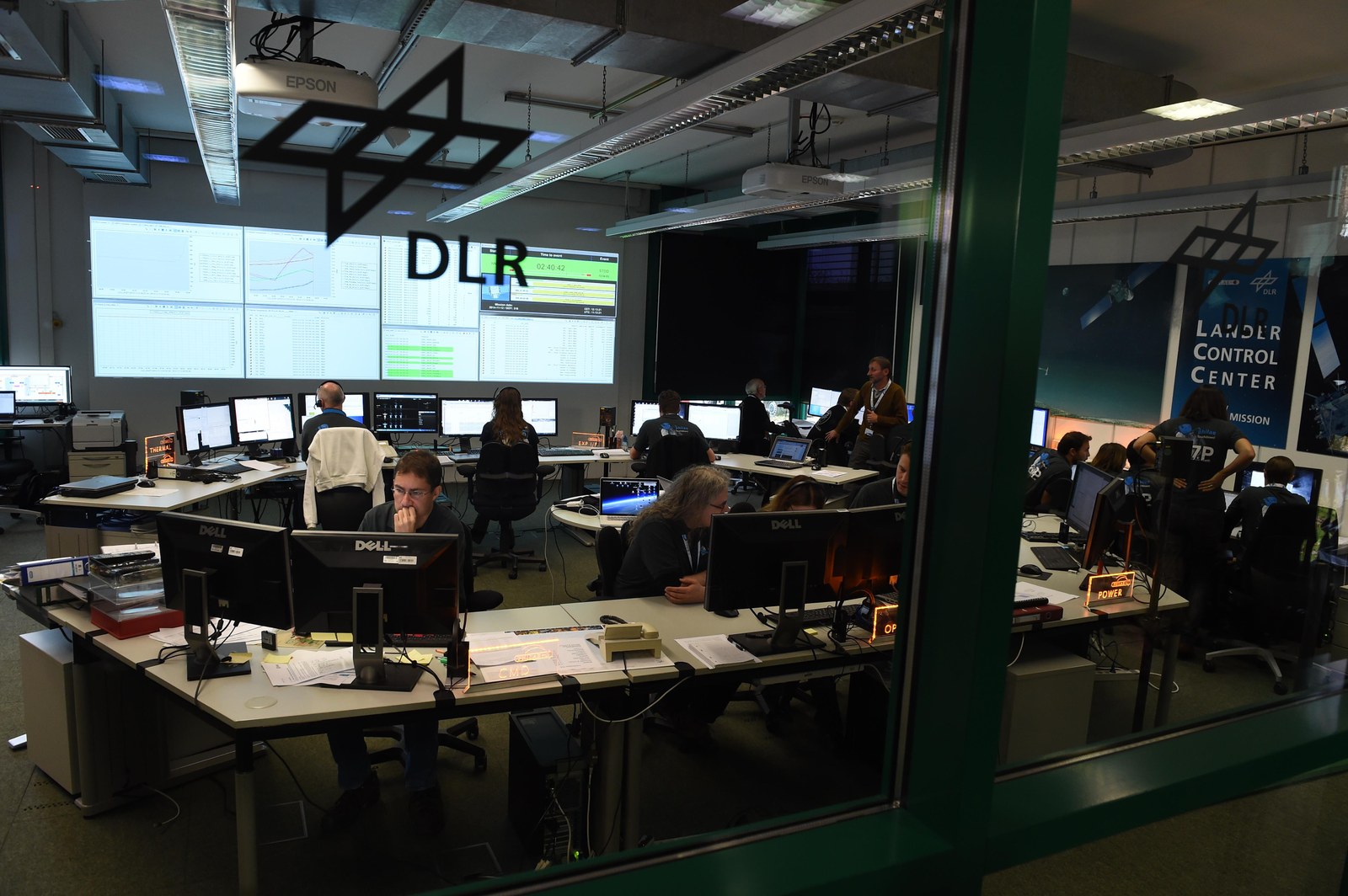Listening for Philae once again

Although from 28 March 2015, following difficulties with its star trackers and navigation system, the Rosetta orbiter is now following a new and more distant trajectory around Comet 67P/Churyumov-Gerasimenko, the team at the German Aerospace Center (Deutsches Zentrum für Luft- und Raumfahrt; DLR) Lander Control Center (LCC) will begin listening again for signals from the Philae lander at 02:00 CET on 12 April 2015. "The orbiter's communication unit will then be active round-the-clock," says Stephan Ulamec, a DLR scientist and the Philae Project Manager. The researchers will make precise calculations of the most favourable moment for an automatic attempt to make contact with Philae as soon as the orbiter’s new trajectories have been defined. "Although the most likely time for Philae to wake up is in May or June, we are naturally concerned to avoid missing out in the case that it has already collected enough energy and reached a sufficiently high temperature."
Flight manoeuvres with the Rosetta orbiter
Philae needs at least 5.5 watts and an operating temperature above minus 45 degrees Celsius to switch itself on and listen for the orbiter to transmit a signal. The position of the orbiter with respect to the lander, and also its distance from Philae, are crucial factors for successful communication. Therefore, it complicates matters somewhat that during a low flyby on the weekend of 28 March 2015, the Rosetta orbiter's navigation system was disturbed by particles surrounding Comet 67P/Churyumov-Gerasimenko and the spacecraft switched into 'safe mode' before retreating on a trajectory that took it approximately 400 kilometres away from the comet. Even though the orbiter team quickly managed to perform a series of manoeuvres and reduce the distance to just 140 kilometres, it will first be necessary to calculate a new trajectory.
"We now plan to fly roughly 100 kilometres from the comet. Then we will apply the same strategy we used when approaching 67P/Churyumov-Gerasimenko last August," explains Sylvain Lodiot, Operations Manager for the Rosetta orbiter at the European Space Agency (ESA). This means that for the time being, Rosetta will refrain from any low flybys above the increasingly active, outgassing comet. This means that in terms of searching for the Philae lander, it is currently not possible to calculate with any precision the moment at which the alignment between orbiter and lander will permit two-way communication.
Blind commands to assist communications
The communication unit on the orbiter will still continuously transmit to Philae. The lander is designed to switch on and start listening for signals as soon as it has acquired sufficient power and heat. Moreover, it will proactively send its own signals once it has received enough sunlight to generate slightly more power – 19 watts. "Like we did in March, we will start sending blind commands to the lander that will help it make optimum use of the available power for heating and communication," says Ulamec. So if Philae is awake, but not yet able to 'tell us', it will still receive and be able to execute the commands.
The DLR team on the ground is excited, particularly with regard to the initial data that Philae will transmit once it has awoke. "They will tell us a lot more about the lander's state of health, its temperature, and the energy it is receiving via its solar panels." Once the lander’s batteries are sufficiently charged, the scientists will be able to operate Philae and its instruments during the comet night. "The chances that Philae will wake up again improve as the comet draws closer to the Sun," explains Ulamec.
